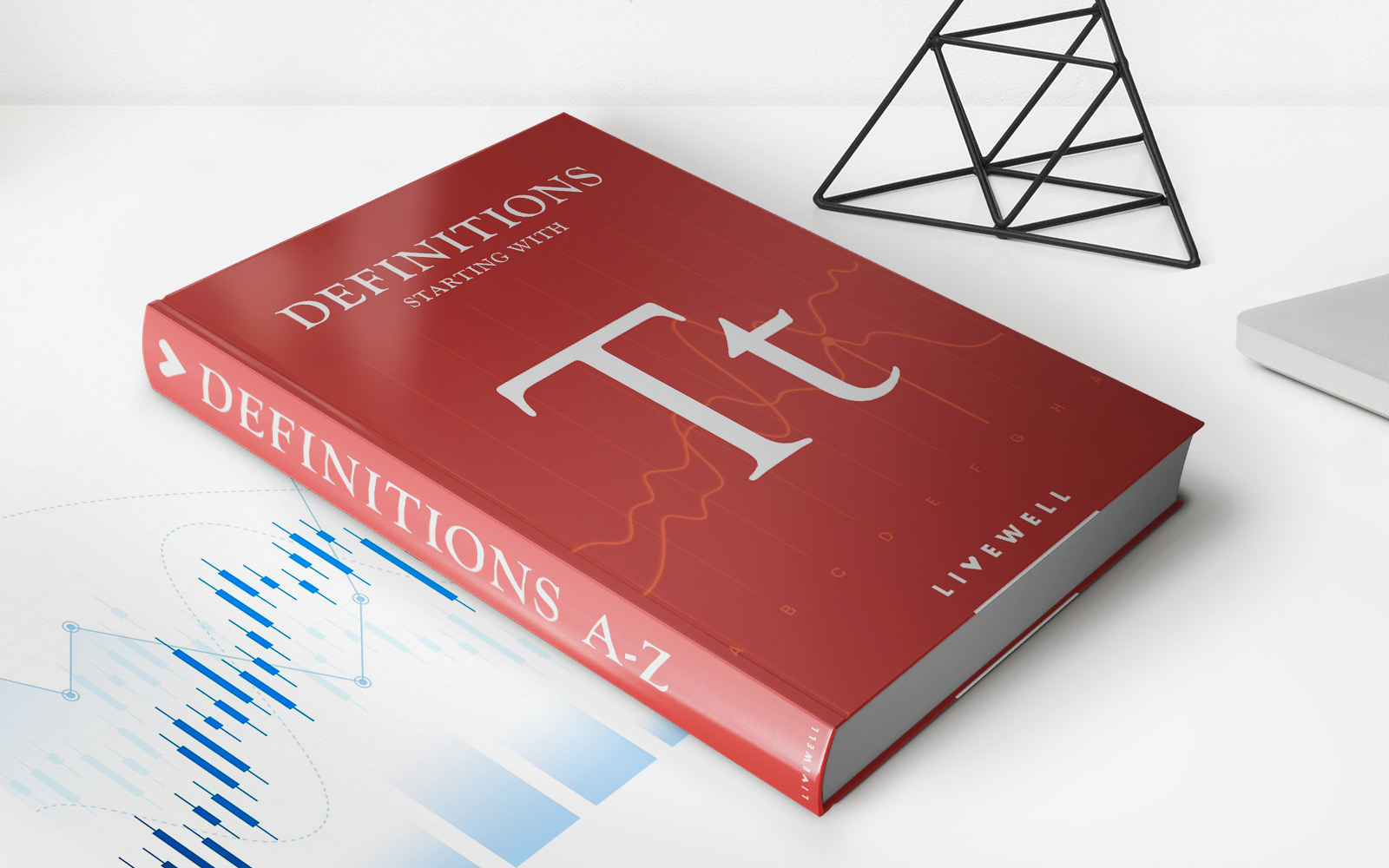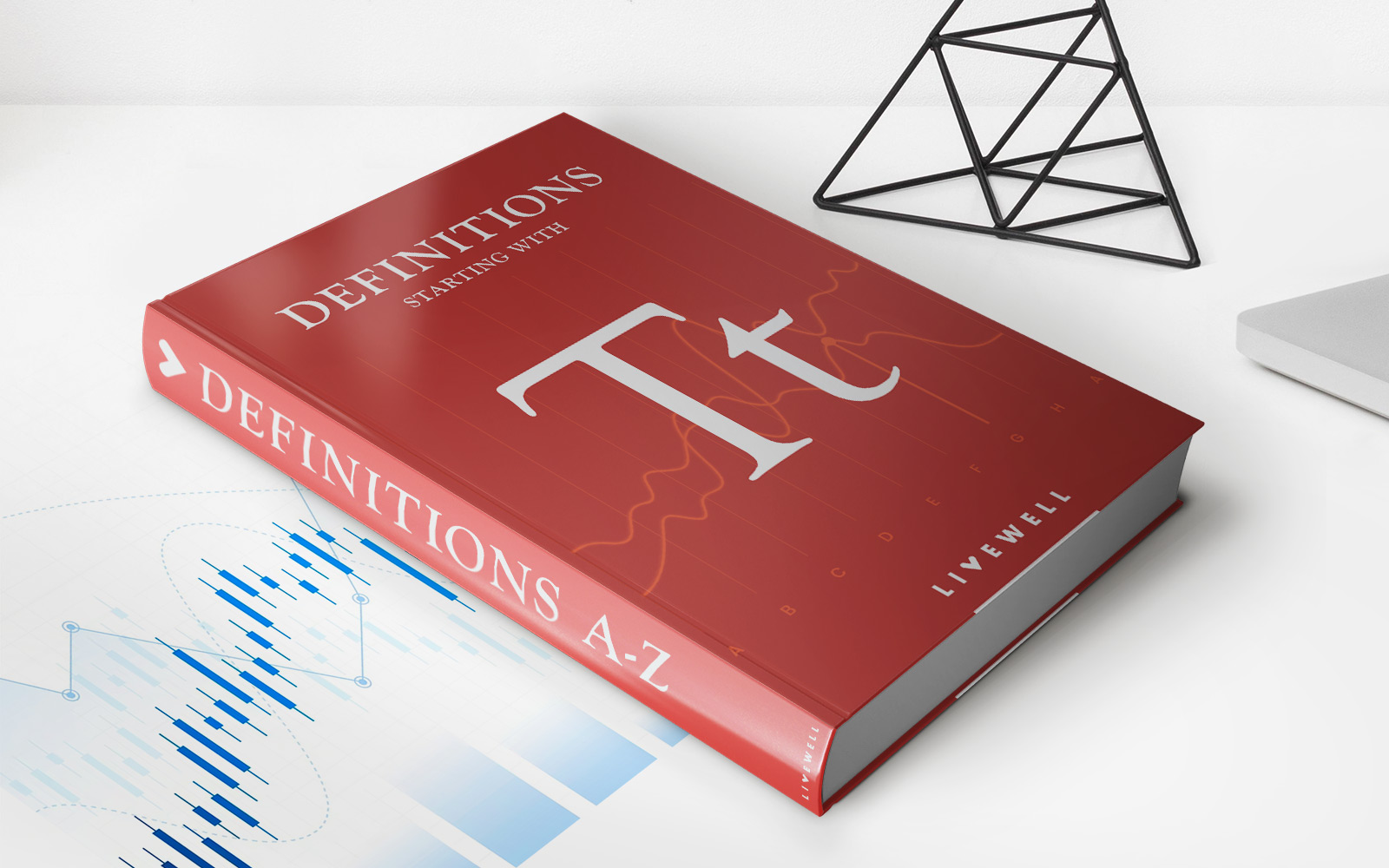

Finance
What Is A Tender Offer In Stocks
Published: January 18, 2024
Learn about tender offers in stocks and how they work in the world of finance. Understand the nuances and potential benefits of participating in tender offers.
(Many of the links in this article redirect to a specific reviewed product. Your purchase of these products through affiliate links helps to generate commission for LiveWell, at no extra cost. Learn more)
Table of Contents
Introduction
When it comes to investing in stocks, there are various strategies and tactics that can be employed to maximize returns. One such strategy is participating in a tender offer. Tender offers can provide investors with opportunities to buy or sell shares at favorable prices, potentially generating significant profits. In this article, we will explore what a tender offer is in the context of stock investing, discuss its purpose, outline the process involved, and examine the advantages and disadvantages of engaging in tender offers.
A tender offer is a conditional offer made by a company or group of investors to purchase a specified number of shares from existing shareholders at a predetermined price and within a specified timeframe. This offer is generally made at a premium to the market price, enticing shareholders to sell their shares. The goal of the tender offer is to acquire a significant percentage of a company’s outstanding shares, thereby gaining control or influencing the decision-making process.
The purpose of a tender offer can vary depending on the specific circumstances. For instance, it can be used as a means for a company to repurchase its own shares, reducing the number of shares outstanding and potentially increasing the value of remaining shares. On the other hand, a tender offer can also be initiated by an external entity seeking to gain control of a target company, either for strategic reasons or as a precursor to a merger or acquisition.
The process of a tender offer typically begins with the offeror publicly announcing their intention to make a tender offer. The offer document, also known as the tender offer memorandum, is then filed with the relevant regulatory authorities and distributed to shareholders. This document contains important details such as the offer price, the number of shares being sought, the timeframe for accepting the offer, and any conditions or restrictions associated with the offer.
Advantages of participating in a tender offer include the potential to sell shares at a premium price, generating a profit for existing shareholders. Additionally, tender offers can provide liquidity for shareholders who may want to exit their investment quickly. On the other hand, there are some disadvantages to consider, such as the possibility of the offer not being successful, resulting in shareholders being left with their shares and potentially facing a decline in share value once the offer period has ended.
Definition of a Tender Offer
A tender offer refers to a type of public offer made by a company, individual, or group of investors to purchase a specified number of shares from existing shareholders of a publicly traded company. It is a formal invitation to shareholders to tender (sell) their shares at a predetermined price, within a specified timeframe, and subject to certain conditions. The offer is usually made at a premium to the prevailing market price in order to entice shareholders to sell their shares.
When a company or investor initiates a tender offer, they typically disclose key details in a formal offer document, known as the tender offer memorandum. This document outlines the terms and conditions of the offer, including the price per share, the number of shares sought, the duration of the offer, and any specific requirements or limitations. It is important for shareholders to carefully review the tender offer memorandum to fully understand the implications and decide whether to participate.
Tender offers can take different forms and may involve various motivations. For instance, a company may decide to implement a tender offer to repurchase its own shares from the market. This can be a strategic move aimed at reducing the number of outstanding shares, which in turn may lead to an increase in the earnings per share and potentially elevate the company’s stock price.
In other cases, a tender offer may be initiated by an external entity, such as a competing company or an activist investor, with the intention of acquiring a significant stake in the target company. This can be part of a broader takeover strategy or an attempt to gain control and influence the target company’s decision-making process. In such instances, the offeror will typically target a large number of shares to secure a substantial ownership position.
It is crucial to note that tender offers are governed by legal and regulatory frameworks that vary across jurisdictions. These regulations aim to ensure fairness and transparency in the process, protect the interests of shareholders, and prevent any fraudulent or manipulative activities. Companies and investors initiating tender offers are required to comply with these regulations and often seek legal advice to ensure compliance.
Overall, a tender offer presents an opportunity for shareholders to either sell their shares and potentially earn a profit or assess the validity and attractiveness of the offer before making a decision. It is essential for shareholders to carefully consider the terms of the offer, consult with financial advisors if necessary, and evaluate their investment objectives and expectations before participating in a tender offer.
Purpose of a Tender Offer
Tender offers serve specific purposes for both the offeror and the target company. Understanding the underlying motivations can provide valuable insights for investors considering participating in a tender offer.
One common purpose of a tender offer is for a company to repurchase its own shares from the market. This can be a strategic move aimed at reducing the number of outstanding shares, which may have several benefits. First, a share buyback can increase the earnings per share by distributing a company’s earnings over a smaller number of shares. This can make the company’s stock appear more attractive to investors and potentially boost its stock price. Second, a share repurchase can return excess capital to shareholders, signaling financial strength and confidence in the company’s future prospects. Lastly, by reducing the number of outstanding shares, the company can increase its control over the remaining shares and potentially thwart any hostile takeover attempts.
Another purpose of a tender offer is for an external entity, such as a competing company or an activist investor, to acquire a significant stake in the target company. This can be part of a broader takeover strategy or an attempt to exert influence on the target company’s decision-making process. By acquiring a substantial ownership position, the offeror gains voting power and the ability to influence corporate policies, board composition, and strategic decisions. This can be particularly appealing in cases where the offeror believes they can unlock value, improve operational efficiency, or generate synergies by combining the two entities.
In certain cases, a tender offer can also be initiated as a precursor to a merger or acquisition. By acquiring a significant number of shares through a tender offer, the offeror can establish a strong bargaining position in negotiations and potentially facilitate a smoother transaction. The tender offer allows the acquiring company to assess the level of shareholder interest and support, and can serve as a mechanism for shareholders to express their preference for the deal.
It is essential for investors to carefully evaluate the purpose of a tender offer before deciding to participate. Understanding the underlying motivations can provide insights into the potential future direction of the company and the impact on shareholder value. Investors should consider factors such as the strategic alignment between the offeror and the target company, the potential benefits and risks associated with the offer, and the offer price premium relative to the market price.
It is important to note that the purpose of a tender offer can vary depending on the specific circumstances and the motivations of the offeror. It is recommended for shareholders to conduct thorough research, seek professional advice if needed, and carefully evaluate their investment goals and risk tolerance before making any decisions regarding participation in a tender offer.
Process of a Tender Offer
The process of a tender offer involves several steps that both the offeror and shareholders must navigate to complete the transaction. Understanding the process can help investors make informed decisions about participating in a tender offer.
1. Announcement: The offeror publicly announces its intention to make a tender offer. This announcement is made through press releases or other means, notifying shareholders and the market of their plan.
2. Offer Document: The offeror prepares and files the offer document, also known as the tender offer memorandum, with the relevant regulatory authorities. This document provides detailed information about the offer, including the offer price, the number of shares sought, the duration of the offer, and any conditions or requirements.
3. Distribution to Shareholders: The offer document is distributed to shareholders, typically via mail or electronic means. Shareholders have the opportunity to review the offer document, assess its terms, and consider whether to participate in the tender offer.
4. Tendering Shares: Shareholders who wish to participate in the tender offer can tender their shares by following the instructions outlined in the offer document. This typically involves completing a letter of transmittal and submitting it to the designated agent, along with the relevant share certificates or other required documentation.
5. Acceptance Period: The tender offer has a specified acceptance period during which shareholders can submit their tendered shares. The duration of the acceptance period is typically defined in the offer document and can range from a few weeks to several months.
6. Evaluation and Acceptance: Once the acceptance period ends, the offeror evaluates the tendered shares and determines whether the conditions of the offer have been met. If the offeror receives more shares than the desired amount, it may proportionally accept the shares or use a lottery system to select the accepted shares.
7. Payment: For the accepted shares, the offeror proceeds with the payment process, remitting the agreed-upon price to the shareholders who tendered their shares. The payment is typically made in cash, although other forms of consideration, such as stock or a combination of cash and stock, may also be offered.
8. Completion or Termination: Once the payment to participating shareholders is complete, the tender offer is considered either completed or terminated, depending on the outcome. If the offeror successfully acquires the desired number of shares, the offer is deemed completed. However, if the offeror does not acquire the desired number of shares or fails to satisfy the conditions outlined in the offer document, the offer may be terminated, and the tendered shares are returned to the shareholders.
It is important for shareholders to carefully review the offer document, assess the terms and conditions, and evaluate the potential risks and benefits before deciding to tender their shares. Additionally, shareholders should be aware of any applicable regulatory requirements and seek legal or financial advice if needed.
Advantages and Disadvantages of Tender Offers
Tender offers in stocks provide both advantages and disadvantages for shareholders considering participation. Understanding these pros and cons can help investors make informed decisions about whether to take part in a tender offer.
Advantages:
- Potential for Profit: Participating in a tender offer can offer the potential to sell shares at a premium to the prevailing market price. This can lead to a significant profit for shareholders who tender their shares.
- Liquidity: Tender offers can provide an opportunity for shareholders to quickly monetize their investment and gain access to cash. This can be beneficial for investors who need liquidity or wish to reallocate their funds to other investment opportunities.
- Return of Capital: In some cases, tender offers involve repurchasing shares at an attractive price. This allows companies to return excess capital to shareholders, demonstrating financial strength and potentially increasing share value.
- Price Discovery: Tender offers can provide valuable insights into the perceived fair value of a company’s shares. The offered price can serve as a benchmark for shareholders to evaluate the market’s assessment of the company’s worth.
Disadvantages:
- Risk of Incomplete Tender: There is a possibility that a tender offer may not be successful in acquiring the desired number of shares. In such cases, shareholders who have tendered their shares may be left with their investments, potentially facing a decline in share value.
- Shareholder Dilution: If the tender offer is made by a company to repurchase its own shares, shareholders who do not participate may experience dilution. This is because the ownership percentage of remaining shareholders increases when the company repurchases and retires shares.
- Uncertain Outcomes: Tender offers, especially those initiated by external entities, can create uncertainty regarding the future direction of the company. Shareholders must carefully evaluate their investment objectives and assess the potential impact of the tender offer on the company’s stability and long-term prospects.
- Regulatory Restrictions: Tender offers are subject to various regulatory requirements and legal constraints. Shareholders should be aware of these regulations and consider any limitations or restrictions that may affect their ability to participate or the actual outcome of the offer.
It is important for shareholders to carefully weigh the potential advantages and disadvantages of participating in a tender offer. Factors such as the offer price premium, the financial health of the company, the strategic implications of the offer, and the investor’s individual circumstances should all be considered before making any decisions. Seeking advice from financial professionals can also help in evaluating the potential risks and rewards of participating in a tender offer.
Regulation of Tender Offers
Tender offers in stocks are subject to regulatory oversight to ensure fairness, transparency, and investor protection. These regulations vary across jurisdictions, but they generally aim to maintain an orderly market and safeguard the interests of shareholders.
In many countries, tender offers are regulated by securities commissions or other regulatory bodies. These regulatory agencies establish rules and requirements that govern the conduct of tender offers and enforce compliance with these rules.
Some of the key regulations that govern tender offers include:
- Disclosure Requirements: Offerors are typically required to provide full and fair disclosure of all material information related to the tender offer. This includes details such as the offer price, the number of shares sought, the timeframe for accepting the offer, any conditions or restrictions, and the intentions of the offeror. The purpose of these disclosure requirements is to ensure that shareholders have access to all pertinent information to make an informed decision.
- Equal Treatment of Shareholders: Regulatory authorities often require that all shareholders be treated equally in a tender offer. This means that the terms and conditions of the offer should be consistent for all shareholders, and no selective advantage should be given to certain shareholders or groups of shareholders.
- Prohibition of Insider Trading: Trading based on non-public information about a tender offer, also known as insider trading, is illegal in most jurisdictions. Regulatory bodies enforce strict measures to prevent insider trading and protect the integrity of the tender offer process.
- Safeguards against Market Manipulation: Regulations aim to prevent manipulative activities in connection with tender offers. Market manipulation can include actions such as spreading false information, engaging in collusive behavior, or artificially inflating or depressing share prices to benefit certain parties involved in the tender offer.
- Requirements for Fair Value Determination: In cases where the offeror proposes a cash tender offer, regulations often require that the offer price be fair and reflect the true value of the shares. Independent valuation or pricing methods may be required to ensure that shareholders receive a fair price for their shares.
- Withdrawal Rights: Shareholders usually retain the right to withdraw their tendered shares before the acceptance of the offer. This provides shareholders with the flexibility to reconsider their decision if new information emerges or if they change their mind about participating in the tender offer.
It is crucial for companies and investors initiating tender offers to comply with these regulations and seek legal advice to ensure adherence. Failure to comply with regulatory requirements can result in significant penalties, legal consequences, and damage to the reputation of the offeror.
As a shareholder considering participation in a tender offer, it is important to be aware of the regulatory framework governing tender offers in your jurisdiction. Understanding your rights and the protections afforded to you under the regulations can help you make informed decisions and protect your interests as a shareholder.
Examples of Tender Offers in Stocks
Tender offers in stocks have been utilized by numerous companies and investors across various industries. Here are a few notable examples of tender offers that have occurred in the stock market:
1. Dell’s Privatization: In 2013, computer technology company Dell initiated a tender offer to repurchase its outstanding shares from public shareholders, with the ultimate goal of taking the company private. Founder and CEO Michael Dell, along with private equity firm Silver Lake, led the offer at a price of $13.75 per share. After a contentious battle with other shareholders, the tender offer was successful, and Dell completed its privatization in 2013.
2. P&G’s Acquisition of Gillette: In 2005, consumer goods giant Procter & Gamble (P&G) announced a tender offer to acquire razor manufacturer Gillette. The deal was valued at approximately $57 billion, making it one of the largest mergers in the consumer goods industry. P&G offered a combination of cash and stock, allowing Gillette shareholders to tender their shares for the equivalent value of $72.95 per share. The successful tender offer resulted in the integration of Gillette into P&G’s portfolio of brands.
3. Kraft Heinz’s Failed Bid for Unilever: In 2017, Kraft Heinz, a multinational food and beverage conglomerate, made a high-profile tender offer to acquire consumer goods company Unilever. The proposed merger, valued at approximately $143 billion, aimed to create one of the world’s largest consumer goods companies. However, Unilever rejected the tender offer, stating that it fundamentally undervalued the company. The failed bid highlighted the complexities and challenges involved in large-scale tender offers.
4. SoftBank’s Tender Offer for WeWork: In 2019, Japanese conglomerate SoftBank Group made a significant tender offer for shares of coworking space provider WeWork. SoftBank’s offer was part of a rescue plan for the struggling company after its initial public offering (IPO) was canceled. The tender offer involved a substantial cash injection into WeWork in exchange for a majority stake in the company. However, the tender offer faced obstacles and was eventually revised, leading to a restructuring of WeWork’s ownership and management.
These examples demonstrate the diverse ways in which tender offers can be employed for strategic purposes, including privatization, mergers and acquisitions, and investment partnerships. It is important to note that the success and impact of tender offers can vary greatly depending on the specific circumstances and the response from shareholders and regulatory bodies.
As an investor, it can be beneficial to study past tender offers and their outcomes as part of your due diligence process. Analyzing the motivations behind these offers, the market dynamics at play, and the reactions from shareholders can provide valuable insights into the potential risks and rewards of participating in tender offers.
Conclusion
Tender offers in stocks are an important aspect of the financial landscape, providing opportunities for companies to repurchase shares, investors to potentially earn profits, and external entities to acquire stakes in target companies. Understanding the definition, purpose, process, advantages, disadvantages, and regulatory aspects of tender offers is crucial for shareholders considering participation in such offers.
While tender offers can provide advantages such as the potential for profit and liquidity, there are also risks to consider, such as incomplete tender offers and shareholder dilution. Compliance with regulatory requirements is essential to ensure fairness, transparency, and investor protection in the tender offer process.
Examples of notable tender offers, such as Dell’s privatization and P&G’s acquisition of Gillette, illustrate the diverse motives and outcomes associated with tender offers. Analyzing past tender offers can provide valuable insights and inform investment decisions.
As with any investment opportunity, shareholders must carefully evaluate the terms and conditions of a tender offer, assess the potential risks and rewards, and consider their individual investment goals and risk tolerance. Seeking professional advice and conducting thorough research can help shareholders make informed decisions about participating in tender offers.
In conclusion, tender offers in stocks are a dynamic and strategic tool within the realm of finance. By understanding the intricacies of tender offers, shareholders can navigate the process effectively and make decisions that align with their investment objectives. As the financial landscape continues to evolve, tender offers will remain an important factor in shaping the market and providing opportunities for both companies and investors alike.














